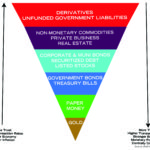Special to the Financial Independence Hub
Before DSCs existed, it was common for advisors who sold mutual funds to get a “front-end load,” which is a fancy term for giving some of an investor’s money to the advisor or the advisor’s employer. So, an investor might invest $50,000 with an advisor, but the first account statement might show only $47,500. The missing $2500 was a 5% front-end load offered as an incentive to the advisor to hunt for mutual fund buyers.
Not surprisingly, investors didn’t like to see a big chunk of their savings disappear like this. Mutual funds had a problem. They needed to give commissions to advisors so they would sell mutual funds, but investors didn’t like to see some of their money disappear. The solution to this dilemma came in two steps.
Raising Annual Fees
Mutual funds charge annual fees to investors called the Management Expense Ratio (MER). MERs are expressed as a percentage of invested assets, and while they seem small, they build up to intolerable levels over decades. Many mutual fund investors don’t know about MERs and don’t notice their corrosive effects.
One way to cover the cost of advisor commissions is to simply raise a fund’s MER. This works well when investors stay for the long term. When investors stay longer than 5 years, a one percentage point increase in the MER covers a 5% up-front advisor commission.
But what happens when an investor sells out of the fund after less than 5 years? In this case, the mutual fund can’t recover the advisor commission. Even, worse, advisors would have an incentive to move investor money frequently from fund to fund to collect more commissions, and investors wouldn’t mind because it wouldn’t cost them anything.
Deferred Sales Charges (DSCs)
Someone had the bright idea to charge investors penalties when they leave a fund too soon. Today, it’s common for DSC funds to charge investors as much as a 7% penalty for withdrawing their money in the first year. This penalty typically declines each year until it’s gone after investor money has been in a fund for 7 years. Continue Reading…






